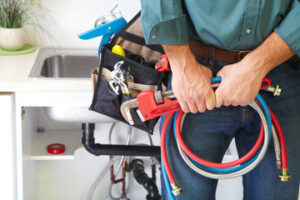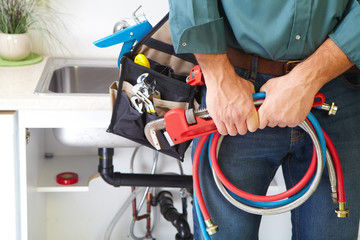A handyman is a professional who can perform maintenance work. Handyman Naperville IL is skilled in many areas, including electrical, plumbing, and repairing appliances. They can also complete a variety of other tasks. They often work on a contract basis and may have to travel between jobs. This is why they need to have good portable tools.
 The fish tape is an essential tool for handypersons, as it can make it easier to run cables or wires through a wall. However, it can be tricky to use and requires a lot of practice. Some tips and tricks for using this tool include ensuring that you have the right length of fish tape and wrapping it properly. This will help to prevent damage from snagging or getting caught on couplings in the walls.
The fish tape is an essential tool for handypersons, as it can make it easier to run cables or wires through a wall. However, it can be tricky to use and requires a lot of practice. Some tips and tricks for using this tool include ensuring that you have the right length of fish tape and wrapping it properly. This will help to prevent damage from snagging or getting caught on couplings in the walls.
Many hardware and electrical stores carry various fish tapes, ranging from 50 to 200 feet in length. They also come in steel and fiberglass options, each rated for tensile strength. Most fish tapes have hooks on either end that can be attached to the wire or cable you want to pull through a wall or conduit. Then, the tape is pulled back slowly to bring it through the hole.
When choosing a fish tape, getting one with easy-to-read markings is important. This can help you determine the distance of a hole or cable that is needed, as well as making it easier to mark your work area. In addition, you should look for a non-conductive model that can be used in areas where there may be electricity present. This can help reduce the risk of shock or injury to the professional. It is also a good idea to have several different fish tapes on hand, as it can be difficult to find the right length of one for a particular project.
Electrical tape
Electrical tape is one of the most useful tools for a handyman. It helps to insulate wiring, make minor repairs to electrical cords, and color-code wired connections. It is also fireproof and resistant to heat, making it ideal for projects involving exposed wiring. A good electrical tape is designed to resist extreme temperatures, and its elastic backing allows it to tightly wrap around a wire. To test a tape’s elongation, stretch out a few inches and wrap it around your finger. If it doesn’t constrict, you should consider buying a different brand.
A good electrical tape should also be water-resistant, which is important for a variety of jobs. Look for an option that has a PVC backing and a rubber adhesive, which can provide resistance to moisture and corrosive elements. You can also find options that are UL listed and CSA certified for added protection.
Another great alternative to traditional vinyl electrical tape is liquid electrical tape, which is applied using a built-in brush and delivers abrasion and damage resistance. It is available in a wide range of colors, and some are even rated for outdoor use. When applying this type of tape, it’s important to follow the proper technique, which is called the half-lap method. This involves overlapping each layer by half the width of the previous one, and it should be thicker than the wire’s insulation.
Duct tape
Duct tape is a versatile adhesive that can be used for a wide range of applications. It has a cloth backing coated with polyethylene and a rubber based adhesive, giving it unique waterproofing properties and strength. It’s also easy to tear by hand, and comes in a variety of colors and prints. You can find duct tape with everything from whimsical yellow ducks to college logos to practical camouflage patterns.
The duct tape that we know and love today was first invented in 1942 during World War II. A factory worker named Vesta Stoudt developed the idea for a strong, water-resistant tape to seal ammunition boxes. Johnson & Johnson began producing the product and it became a military favorite. It later gained a new name and color, becoming the silvery tape we know and use today.
To ensure that duct tape works well, it’s important to use it on surfaces that are clean and dry. The adhesive on the tape won’t stick well if there are oil or dust particles present. Also, if the surface to which you are applying the tape is too cold, it can decrease the adhesive wetting capacity.
Duct tape can be used to make a number of simple repairs. For example, if you tear a pane of window glass, crisscrossing the edges with duct tape will help keep insects out until it can be replaced. Another great use for duct tape is to patch holes in your tent. It can even be used to cover a hole in your car to prevent rain from getting in.
Brad nails
Brad nails are a great way to add some flair to a woodworking project. These tiny 18-gauge nails are often used for fine detail trim work and small pieces of molding. They are also ideal for wall paneling, cabinetry, and furniture making. They are lightweight and don’t have as much holding power as larger finishing nails, but their slender design helps prevent splitting delicate materials. They are less prone to rust than galvanized nails, but they should not be used in exterior applications.
A brad nailer is a pneumatic or electric-powered tool that shoots 18-gauge brad nails. These are the smallest nails that you can use for woodworking. These nails are very thin and have a flat head, which makes them easy to hide in wood trim and paneling. They are also available in a variety of lengths, from 5/8-inch to 2-inch.
While you can use a brad nailer for any type of woodworking, they are particularly handy when working with soft, fragile materials. The small size of the nails and their slender shape help prevent splitting and can eliminate the need for glue. They can also be used for fastening case corners and drawer fronts to cabinets or picture frames.
If you want your brad nails to drive in smoothly, rub a little beeswax on the shanks before driving them. This will keep the nails from snagging and make them easier to remove later. Also, try to avoid bending the nails while trying to drive them in.
Voltage tester pen
A handyman needs a variety of tools to complete various tasks. Besides basic tools like drills and screwdrivers, they also need a few specialty tools, such as the voltage tester pen. These devices are small and portable, and they help users quickly test for live electric current. They can be used to check outlets, light fixtures, and even batteries and extension cords. They can also detect GFCI protection.
These tools are similar to multimeters but much more compact. They have two contact points that the user can touch to the circuits’ wires to measure current flow. They can be used for residential and commercial applications, and are very easy to use. A full-size multimeter is usually overkill for homeowners, but these small handheld units can be useful for electricians and other professionals.
A volt stick (also known as a volt detector or voltage indicator) is a great tool for handymen because it allows them to safely check for live electrical currents without having to open the equipment that they are working on. These tools can quickly detect voltage at the tip of their pen and can display a bright red flashing light or a buzzer alarm when they encounter electricity. They can be set to different detection modes, allowing them to work in several situations without having to switch tools. They are also efficient in battery consumption and can reliably check low or standard voltage connections.
Glow rod
Glow rods are a tool that helps you install electrical wires in open spaces such as attics, crawl areas, and walls. They are similar to fish tape and come in a variety of lengths. Most of them are made of fiberglass and have a protective coating to guard your hands from painful splinters. They also have a bright orange color that glows in the dark, illuminating dark joist and stud bays. This makes them easy to maneuver in tight spaces.
A handyman should have a variety of tools for his job. These include a voltage tester pen and a mud ring. These tools are used to protect the drywall while you fish a wire through. They are also useful for insulating and protecting the drywall from water damage. A mud ring also works as a slug stop, preventing the screw that holds the slug from being stripped out of the wall.
The most important thing for a handyman is his skills. He should be able to diagnose problems and make repairs quickly. He should have an excellent knowledge of electrical wiring, plumbing, and construction. He should also be able to read blueprints and understand engineering diagrams.
A Ferret inspection camera can be attached to any fish rod, glow stick, or rigid wire pulling stick and provides a live video feed directly to your smartphone. This makes it easier to navigate dark work spaces and saves time on the job.
